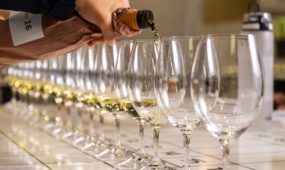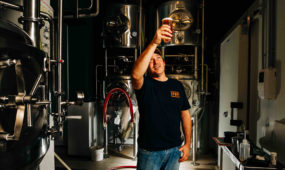Food Park set to open doors to Asia
Food & Wine
A MAJOR food producing state in Australia is on the hunt for large-scale tenants to anchor a premium food hub and take its products to the world.

Sign up to receive notifications about new stories in this category.
Thank you for subscribing to story notifications.
The South Australian Government will spend $7 million to attract anchor tenants to the Northern Adelaide Food Park, and to promote the use of renewable energy and energy storage solutions at the hub.
The 40ha food park will be built in the Parafield Airport precinct and will provide food manufacturers, food packaging specialists, cold-chain suppliers and transport companies with the opportunity to co-locate on the one site, with access to common infrastructure and services.
South Australia is renowned for world-class wine, seafood, fresh fruit and vegetables, meat products and grains. Its food and wine industries generated a record $18.2 billion in revenue in 2014-2015. Finished food and wine exports increased by 17 per cent in the past financial year.
The food hub site is located next to an airport and major road and rail freight routes.
Professor John Spoehr is director of Flinders University’s Australian Industrial Transformation Institute in Adelaide. He said there was exponential growth in demand for clean, green food, particularly in China.
“We’re wanting as much as possible to export not just the raw produce but also food that has a significant value-add associated with it, that’s where we can build a sustainable food industry and a manufacturing industry around a horticulture industry,” Prof Spoehr said.
“South Australia is respected as a place that is producing clean green food but the challenge is to scale up and improve quality and readiness for export in a way that also transforms the clean green food into manufactured food goods.”
Prof Spoehr said the government would be looking to secure an anchor company with “deep market connections into Asia and one that is also capable of working to the international food standards that are necessary to do that successfully”.
“The food industry is one of the brightest spots we’ve got for growth over the next two decades so we just have to get better organised and cluster together some of the companies that can really do it well to international standards,” he said.
Food SA Chief Executive Officer Catherine Sayer said the hub would encourage world’s best practice, collaboration and the opportunity to reduce manufacturing costs through new, efficient facilities and shared services.
“The South Australian food industry is very well networked and a hub, such as the Food Park, will continue to bring the industry together and will benefit those inside the precinct and other industry players who will want to use the facilities,” she said.
The $7 million government funding is part of a broader $24 million investment in new initiatives for northern Adelaide to drive economic and social transformation in the region ahead of the closure of General Motors Holden’s car manufacturing plant in 2017.
Other initiatives in the Northern Economic Plan include:
$10 million for a Small Business Development Fund for northern Adelaide, to help small businesses to grow and create sustainable jobs;
$4 million for a new Disability Employment Hub to train former automotive workers, upskill existing workers, and encourage university students to work in the disability sector; and,
$2 million to support an alliance of northern businesses to trial electric/diesel bus prototypes, manufactured in northern Adelaide.
South Australian Premier Jay Weatherill said Adelaide’s northern suburbs were dynamic and diverse and the investment would generate opportunities for the people who lived, worked, studied, and invested in the region.
“The plan identifies key industry sectors that could help to deliver a viable future for northern Adelaide and new careers for auto workers – agriculture, food and beverages; health, ageing and disability; construction and urban renewal; defence; tourism, recreation and culture; and mining equipment and technology services,” Weatherill said.
Jump to next article



